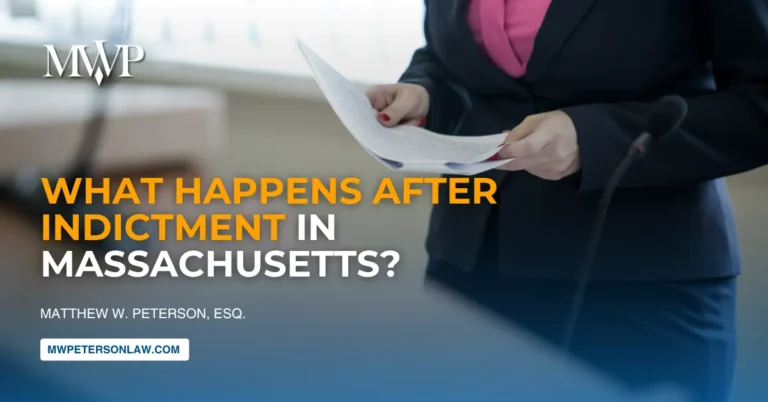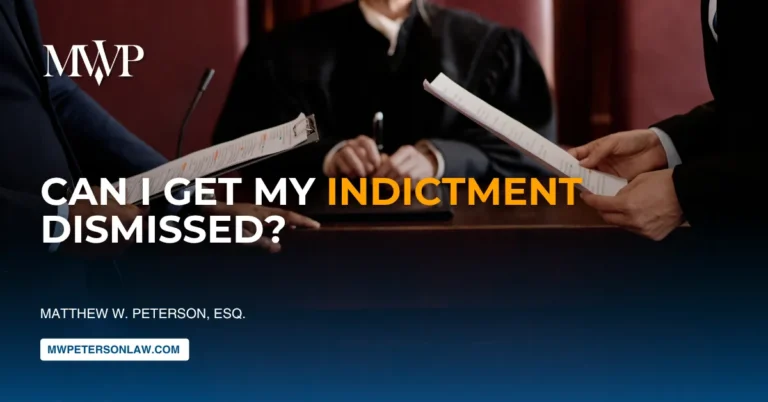Many international students have recently received alarming notifications that their F-1 visas have been revoked and their SEVIS records terminated. This situation can cause tremendous fear and confusion, leaving students wondering about their legal status and options. Here’s a comprehensive guide to help you understand what’s happening and what steps you can take.
Understanding Visa Revocation vs. SEVIS Termination
First, it’s crucial to understand the difference between these two concepts:
Visa Revocation
A visa is simply a travel document that allows you to enter the United States. The Department of State (DOS) can revoke your visa through what’s called “prudential visa revocation” even without a conviction or recent immigration violation. Common reasons for visa revocation include past arrests, certain political activities, or social media behavior viewed as concerning. Importantly, visa revocation alone does not impact your valid status if you’re already in the United States.
SEVIS Termination
SEVIS (Student and Exchange Visitor Information System) is the database that tracks international students. U.S. Immigration and Customs Enforcement (ICE) may terminate your SEVIS record, sometimes shortly after visa revocation. Common reasons include:
- Letting your I-20 program end date expire without requesting an extension
- Taking too many online courses and not enough in-person classes
- Working without authorization
- Taking unauthorized leave from school
- Not registering for required terms
- Not making continuous progress toward your degree
- Alleged “serious adverse foreign policy consequences” of your presence
When Does Unlawful Presence Start?
Understanding when unlawful presence begins is critical for F-1 students facing status issues:
- For F-1 students admitted for duration of status (D/S): Unlawful presence does not automatically begin accruing when your SEVIS record is terminated. Instead, unlawful presence begins on the day after USCIS or an immigration judge makes a formal finding that you violated your nonimmigrant status.
- After a denied reinstatement application: If your reinstatement application is denied, you begin accruing unlawful presence from the date of the denial.
- Serious consequences: Accruing more than 180 days of unlawful presence can trigger a 3-year bar to reentering the United States. Accruing one year or more can result in a 10-year bar.
F-1 Grace Periods: What You Need to Know
- Program Completion Grace Period (60 days)
- After successfully completing your course of study and any authorized practical training, you have a 60-day grace period to prepare for departure, transfer to another school, or change status.
- Authorized Early Withdrawal Grace Period (15 days)
- If you’re authorized by your DSO to withdraw from classes before completing your program, you have a 15-day grace period to depart the United States.
- No Grace Period for Status Violations
- If your SEVIS record is terminated due to a status violation, you are not eligible for a grace period. Regulations state that students who fail to maintain status are not eligible for an additional period for departure.
Addressing Your Status Issues
If your F-1 visa has been revoked and/or your SEVIS record terminated, you generally have two primary options:
Option 1: Reinstatement While Remaining in the U.S.
You can apply for reinstatement to F-1 status while remaining in the U.S. This may be appropriate if:
- You have not been out of status for more than 5 months at the time of filing (or can demonstrate exceptional circumstances for a delay).
- You have no record of repeated or willful violations of regulations.
- You have not worked without authorization.
- You are pursuing or intend to pursue a full course of study.
- You can demonstrate that the status violation resulted from circumstances beyond your control or was related to a reduced course load that could have been authorized.
- You have not been dismissed from your program and are academically and financially qualified to continue.
Reinstatement Process:
- Consult with your school’s Designated School Official (DSO) and an immigration attorney.
- Request a reinstatement I-20 from your school (your DSO must recommend reinstatement in SEVIS).
- Prepare Form I-539 (Application to Extend/Change Nonimmigrant Status) and supporting documents.
- Pay the $370 filing fee and $85 biometrics fee.
- If out of status for more than 5 months, pay a new SEVIS fee.
- Submit a detailed letter explaining why your status violation occurred and why reinstatement is warranted.
- Include financial documentation showing you can support yourself during your studies.
- Obtain supporting letters from your academic advisor and the international office.
- Submit official transcripts.
Important note: While applying for reinstatement, no on-campus employment, co-op, or internship assignments are permitted.
Pros of Reinstatement:
- You don’t have to leave the U.S.
- If approved, you will maintain continuous F-1 status.
- No need to apply for a new visa.
Cons of Reinstatement:
- Processing can take 4-12 months.
- If denied, you begin accruing unlawful presence immediately.
- Denial may trigger visa cancellation and potential 3 or 10-year bars to reentry if you don’t depart promptly.
Option 2: Depart and Re-enter with a New I-20
Some students may find it preferable to depart the U.S. and reenter with a new SEVIS record and visa. This approach may be better if:
- You’re not eligible for reinstatement (e.g., worked without authorization).
- You can’t wait for USCIS to process a reinstatement application.
- You have strong ties to your home country and are confident about getting a new visa.
Process for Travel and Reentry:
- Obtain a new initial I-20 from your school.
- Pay a new SEVIS fee.
- Depart the U.S.
- Apply for a new F-1 visa at a U.S. consulate if your current visa is expired or shows a different school.
- Reenter the U.S. (no more than 30 days before your program start date).
- Complete check-in with your international student office.
- Register for a full course load immediately.
Pros of Travel and Reentry:
- Potentially faster resolution than reinstatement.
- Clean slate with a new SEVIS record.
Cons of Travel and Reentry:
- No guarantee of getting a new visa.
- Must wait until 30 days before your program start date to reenter.
- You may lose eligibility for CPT or OPT and need to reestablish it by studying for one full academic year.
- Additional costs for travel and possibly a new visa application.
Getting Your SEVIS Status Terminated Back to Active
Returning your SEVIS record to “Active” status is crucial for maintaining your ability to study legally in the U.S. and access F-1 benefits. There are three primary methods:
1. Through USCIS Reinstatement Approval
If your reinstatement application is approved by USCIS:
- You’ll receive an I-797 Approval Notice.
- Provide a copy to your DSO immediately.
- Your DSO will then update your SEVIS record to “Active” status.
- Once active, you regain all qualifying F-1 benefits, including employment eligibility.
2. Through a SEVIS Data Correction Request
If your SEVIS record was terminated due to a technical or administrative error:
- Your DSO can request a “SEVIS data correction” from SEVP.
- You’ll need to provide evidence that the termination was erroneous.
- This process is typically faster than reinstatement but only applies in cases of clear error.
- Your DSO must submit the correction request through SEVIS for SEVP adjudication.
3. By Leaving and Returning with a New SEVIS Record
If you choose the travel and reentry option:
- Your old SEVIS record remains terminated.
- Your school issues you a new I-20 with a new SEVIS ID number.
- Upon successful reentry to the U.S., your new SEVIS record will be activated.
Can You Continue Studying?
While SEVIS termination does not automatically cancel your enrollment, continuing to study involves careful consideration:
- Some schools may allow continued enrollment while you pursue reinstatement.
- Your DSO may request a “SEVIS data correction” if the termination was due to a technical or administrative error.
- Be aware that ICE has the authority to take enforcement action against students who are out of status, even if they are still enrolled in courses.
- Consult with your international student office and an immigration attorney before making decisions about continuing your studies.
What if Reinstatement is Denied?
If USCIS denies your reinstatement application:
- You’ll need to exit the U.S. and seek reinstatement by readmission with a new I-20.
- Your visa will be automatically canceled.
- You will be limited to applying for nonimmigrant visas only in your country of citizenship or permanent residence.
- You’ll begin accumulating unlawful presence, which could lead to 3 or 10-year bars if you remain in the U.S. too long.
- Even if you subsequently reenter the U.S., there will be an official record of a status violation in DHS files, which may impact future immigration benefits.
Important Considerations
- Don’t travel while reinstatement is pending. Leaving the U.S. abandons your reinstatement application. If you decide to leave, you should formally withdraw your application.
- Five-month timeline is critical. For reinstatement, filing within 5 months of your status violation is generally required unless you can demonstrate exceptional circumstances.
- Consult an immigration attorney. The consequences of making the wrong decision can be severe, and each situation is unique.
- Document everything. Keep records of all communications with immigration authorities and your school.
- Financial documentation is essential. For both reinstatement and reentry, you must demonstrate sufficient financial resources to support your studies.
- Be honest about violations. When seeking reinstatement, accurately explain what happened rather than hiding or misrepresenting past violations.
Final Thoughts
Facing F-1 status issues can be extremely stressful, but understanding your options is the first step toward resolving your situation. Whether through reinstatement or departure and reentry, there are established pathways to regain valid student status. Work closely with your international student office and an experienced immigration firm such as the Law Office of Matthew W. Peterson to determine the best approach for your specific circumstances. Taking timely, strategic action will give you the best chance of successfully addressing your immigration challenges.











